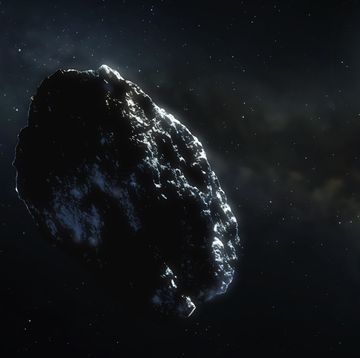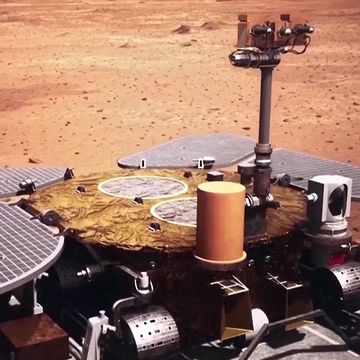NASA's future Deep Space Gateway would be a research station in orbit around the moon. It could be used to aid the construction of lunar infrastructure and ultimately serve as a waypoint for a journey to Mars. Although it seems increasingly unlikely that NASA will land an astronaut on Mars in the 2030s, the Deep Space Gateway is a much more manageable mission with widespread support from the private space industry.
Yesterday, NASA put out a request for information (ROI) regarding propulsion systems that could be used on the future moon station. The agency hopes to launch the first piece of the station—a power propulsion bus upon which the rest of the Deep Space Gateway will be built—in 2022, on the second flight of the Space Launch System (SLS) rocket and Orion capsule known as Exploration Mission-2 (EM-2), according toAviation Week.
NASA is looking for a solar electric propulsion (SEP) system or ion thrusters for the power and propulsion bus. The bus would allow the station to change its orbit around the moon, supporting a variety of missions with a focus on telerobotics. That would involve astronauts on the orbiting moon station controlling rovers and robots on the surface to build structures and harvest lunar resources.
Exploration Mission-3, the third flight of SLS, would loft a habitation module to the Deep Space Gateway. Work on the habitat has already begun, as Boeing and Lockheed Martin have been awarded contracts to develop prototypes of the habitation module and other components of the Deep Space Gateway. The final piece would be a logistics module that would be launched on EM-4. The moon station would allow astronauts to stay in orbit around the moon for 20 to 60 days, with the station itself orbiting for two or three decades.
"We are busy doing the propulsion activity right now and figuring out how to get it acquired to support EM-2 in roughly 2022," said William Gerstenmaier, associate administrator at NASA for human exploration and operations, at a July 12 forum held by the American Institute of Aeronautics and Astronautics. "What's exciting is that with electric propulsion it doesn't have to stay in one orbit around the moon. It can be equatorial, polar or halo to allow telerobotic activities. So this is not a space station. It is a research facility that can be moved to alternate locations with the power propulsion bus and which stays in orbit for roughly 20 to 30 years. It is also the transportation node potentially for going to Mars."
Gerstenmaier recently suggested that a crewed landing on Mars in the 2030s is likely unrealistic, and the agency seems to be refocusing its resources on developing a permanent station at the moon. The timeline for an orbiting lunar research station, however, depends entirely on the completion of NASA's SLS heavy-lift rocket, which has been delayed multiple times. One advantage NASA has in trying to develop a lunar station is significant resource contribution from companies like Lockheed Martin, which see a potential for profit in lunar industry, primarily by manufacturing rocket fuel on the moon.
It might be some time until we get to Mars, but the space institutions of the country—and indeed the world—are set on returning to the moon as soon as possible.
Source: Aviation Week

Jay Bennett is the associate editor of PopularMechanics.com. He has also written for Smithsonian, Popular Science and Outside Magazine.













